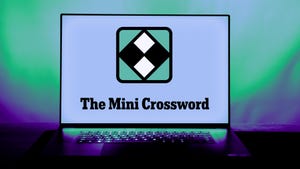F1 Arcade trip report: Great sims make for a compelling experience

Formula 1’s recent popularity still feels a little strange to longtime fans of the sport, particularly in the US, where it had been so niche for so long. But the past five years have seen F1 rise meteorically, and a new, much younger fanbase infused with enthusiasm for the cutting-edge race cars and the athletes who pilot them has emerged. F1 Arcade capitalizes on that popularity, combining food and drinks—including Lewis Hamilton’s agave tipple—with dozens and dozens of race simulators that let you race against friends or compete in teams against others.
With Washington, DC, chosen for F1 Arcade’s second US location, I obviously had to go check it out.
My first visit to the arcade in DC’s Union Market district was several weeks ago at the launch party, an affair that was packed with influencers and loud music. But I returned earlier this week, having booked a 45-minute, five-race session playing head-to-head against a friend. Prices vary depending on the number of races and whether you’re that at peak time, starting at $22/player for three races off-peak and going up to $42/player for five races at peak time. There’s no charge for people who are just spectating (or eating and drinking), not racing.
Perhaps surprisingly, the sims—which use hardware from Vesaro—don’t run the official Codemasters’ F1 game but instead a custom version of rFactor2 made by Motorsport Games for F1 Arcade, a title that’s notorious for being hard to master.
F1 Arcade’s CTO Gavin Williams thinks back to 2021. “There were a lot of things that weren’t quite right with the game,” he told me. “We actually went to Vesaro, who manufactured the simulators. We tried it, and literally none of us could race. It was just so unbearable to watch, and there were things that were missing, like the racing line, the skill settings weren’t quite right.”
Accessible racing is the name of the game, so the first four (out of five) difficulty levels lean toward the easier side of things: If you want to change your own gears as opposed to letting the computer handle that for you, you need to pick Elite, which also turns off the traction control and racing line.
At first, I thought that might be a little daunting, but I was mistaken. While I don’t claim to be anything like a sim-racing alien, as long as you are progressive with the accelerator and don’t just treat it like an on-off switch, the cars are actually extremely controllable, and you don’t need to be Max Verstappen to catch a car if it begins to snap sideways.
Predictably, this footage is from the one race I did not win—a spin on the last lap took me from 1st to 8th place. No fear, reader—I won the other four out of five.
“What we actually found, quite naively, was that there was actually a subset of people who really, really wanted to push their skills to the next level—no driving line, full manual gears, like all that kind of stuff,” Williams said. “And because of the way that we built the underlying system that runs rFactor, it was quite easy for us to add that new skill level in like a week.”
The Vesaro sims shake you around in your seat, and there’s good feedback from the steering wheel, although force feedback is dialed down quite a lot, in deference to the wide range of players expected. “There are some boundaries that we have to abide by to make sure that people don’t break their wrists and stuff like that. You can’t put force feedback up to like 100 percent in rFactor and then 100 percent in Moza [the wheelbase] to give you like 200 percent force feedback—people would not have a good time,” Williams said.
Each sim is run by a pair of PCs, one for each screen, with one sim being designated the multiplayer server for a given booking. “And then we have a game-management system that we’ve built in-house, and that’s responsible for receiving a booking from the booking system, displaying the names on the sims, checking guests in, collecting all the points,” Williams said.
Winning races earns you those points, but so do other achievements. “We take telemetry from every single simulator to work out where the overtakes are, who’s driving on the grass the most, so we can get those people points as well, so everyone feels included, like all that kind of stuff,” Williams said.
The arcade was relatively busy on a Monday evening in early December, with a large corporate or office party taking up most of one section and a steady stream of smaller parties. The food and drink options were not overpriced considering the location—the cost of living in DC can be noticeable—and if you’re an F1 fan who’s been wanting to sample Lewis Hamilton’s non-alcoholic Almave agave spirit, there’s a rather interesting mocktail that makes use of it.
The DC F1 Arcade is the second site in the US after Boston, with a total of 30 locations planned here.
Jonathan is the Automotive Editor at Ars Technica. He has a BSc and PhD in Pharmacology. In 2014 he decided to indulge his lifelong passion for the car by leaving the National Human Genome Research Institute and launching Ars Technica’s automotive coverage. He lives in Washington, DC.






